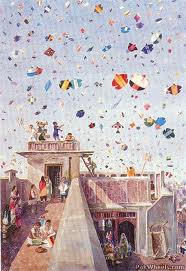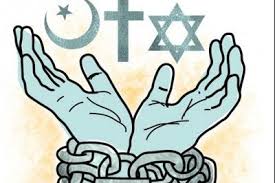By Faraz Hussain

The reason why urban centers are becoming hubs of radicalization is because of sharp economic inequalities, social insecurities, political fallout, political killings, crime and strong religious militancy in the cities especially in Karachi. This means that the “already radicalized” people of Zi’a’s regime find multiple reasons to fight in this “established battle ground” in the urban centers. In this way, the process of “depeasantization” to “retribalization” and religious group forming is the root cause of radicalization which leads to Islamic or ethnic militancy. This makes governance a dream for the state and the levels of crime get increasingly higher every day.

In this way, it leads to diminishing traditional economy, over urbanization for example in Karachi, and over expanded tertiary activities (Mingione, 29). In other words, the capitalist accumulation in the cities reproduces social relations of production and social classes which result in a social conflict between the different social classes (Mingione, 30). Therefore, it is the accumulation process which creates contestation over resources in the cities because this kind of accumulation is not that sharpened in the social relations of rural populations (Mingione, 30). It is because of this urban insecurity that the rural emigrants try to connect with their “tribes” in the cities and live in associated communities. This process can be called as “retribalization” because the previous farmer is now an urban industrial worker who reconnects to his scattered community members in the city. Furthermore, population congestion makes these “tribes” fight with each other over small conflicts because of their political backing as well (Khan, 55). In this case, Orangi town of Karachi can be the best example to describe because it is the largest and the most ethnically diverse area of the metropolis. It may constitute ten percent of the total city’s population and an enumeration made in 1989 showed that there were 110 sectors, 6,347 lanes and 94, 122 houses in this ‘mini Pakistan’ (Khan, 154).

(Orangi Town Karachi: One of the major hubs of ANP in the metropolis)
Adding to that, their biggest problems were housing and sanitation, health, education and jobs employment (Khan, 56). It was in 1986 when this town was burning with the flames of ethnic and provincial killings as an aftermath of the death of Bushra Zaidi and the bulldozing of Suhrab Goth (Khan, 56). This flame of hatred led to the migration of hundreds of mohajirs, pathans and baloch within Karachi and hundreds of houses were burnt away (Khan, 57).

(An array of hope for the people of Orangi)
Similarly, hundreds of baloch had to migrate to Lyari town because of an event occurred in Hyderabad – hundred miles away from Karachi (Khan, 58). Almost 1,400 Orangi Balochis ran away to seek shelter with their clansmen in hub villages and urged them to make retaliatory raids on orange (Khan, 58). In this way, it is also famous that the Baloch tribals possess heavy arms, rocket launchers, grenades, and machine guns for their protection or for the purposes of retaliations (Khan, 58). This shows that the people urban feel connected and loyal to their ethnic and tribal associations and the contestation occurs on these regional lines. However, the real causes behind these killings are definitely urban insecurities and social exclusions from the attractions which the city offers otherwise. Similarly, it gets heated by sectarian rhetoric and the militarization of the people by organizations like Tehreek e Taliban Pakistan, Awami National Party, Muttahida Qaumi Movement and peoples Aman Committee etc (Khan, 59).


(The picture shows the retrospective killings of two opposition parties)
This presence of arms in the hands of people along with the feeling of ‘saving their communities’ makes it highly probable that the people in these urban slums will fight over conflicts and that it will lead to radicalization.

This is described as “cognitive alienation” where people follow the morals which are not the direct product of their own reflection and understanding but are rather imposed to them due to circumstances and existing dominant power structures. This is the same case with the ‘suburbanization’ in Pakistan where people get caught in an already existing battle grounds between different power structures which are operating on ethnic and sectarian lines. In this aspect, it is also very important to mention the role of madrassas in spreading sectarian violence in the urban centers of Pakistan through these marginalized and economically exasperated communities. As many as 218 people have been killed and 295 have been injured during the sectarian attacks in the year 2013 in Karachi alone (tashadud.org).

In all of these situations, one can, however, hope for a better future because the trend towards education is still rising and, surprisingly, the female numbers of students is almost equal to their male counterparts even in the suburban town of Orangi:
|
Schools |
Students |
Male |
p/c |
Female |
p/c |
| Preprimary |
203 |
5602 |
2905 |
51.85% |
2697 |
48.14% |
| Primary |
261 |
42049 |
22896 |
54.45% |
19153 |
45.54% |
| Secondary |
121 |
32940 |
18491 |
56.13% |
14449 |
43.86% |
| Total |
585 |
80591 |
44292 |
54.95% |
36299 |
45.04% |
Source: Orangi Pilot Project by Akhter Hameed Khan, Oxford University Press
This is a greatest hope because tolerance is the biggest product of education.
Works Cited
Khan, Akhtar Hameed”, Orangi Schools”, Orangi Pilot Project – Reflections and Reminiscences, Karachi: Oxford UP, 1996, 85-86, Print.
Mingione, Enzo, “Class Conflict and Urban Development”, Social Conflict and the City, Oxford: Basil Blackwell Ltd, 108 Cowley Road, 1981, 30-31, Print.































